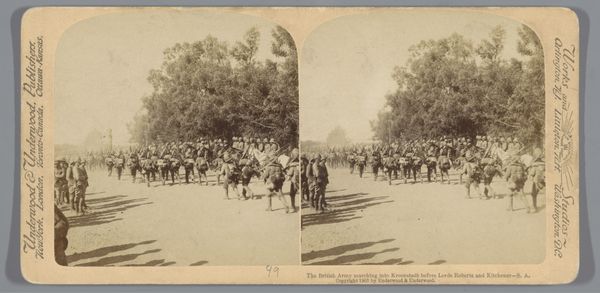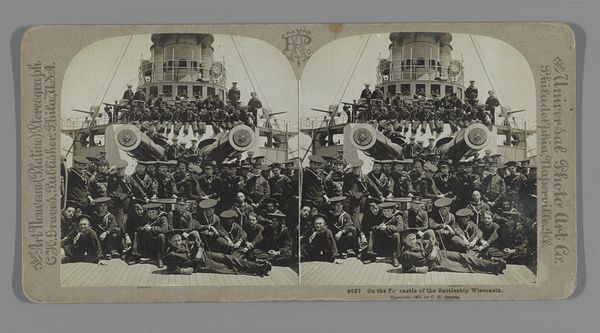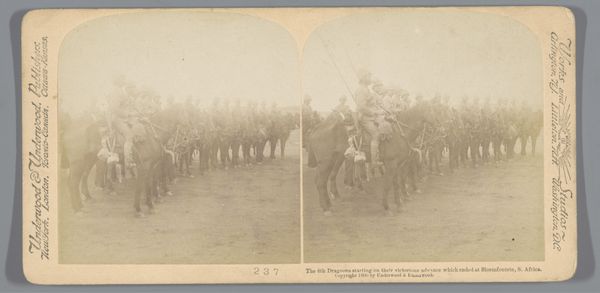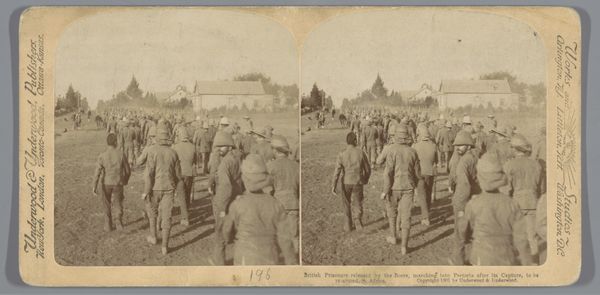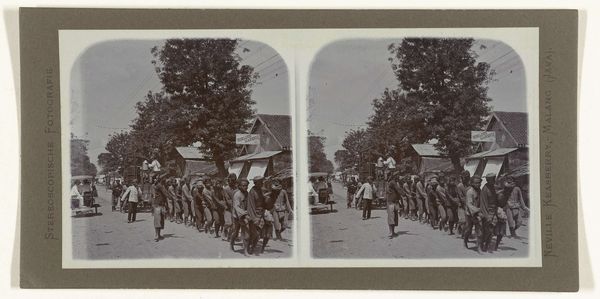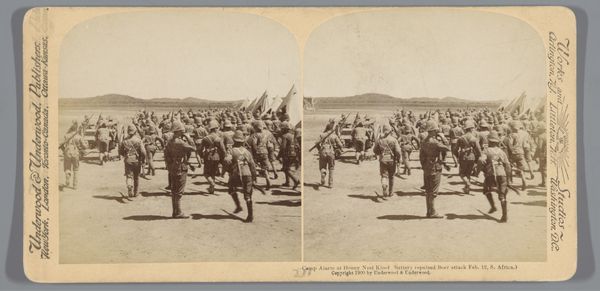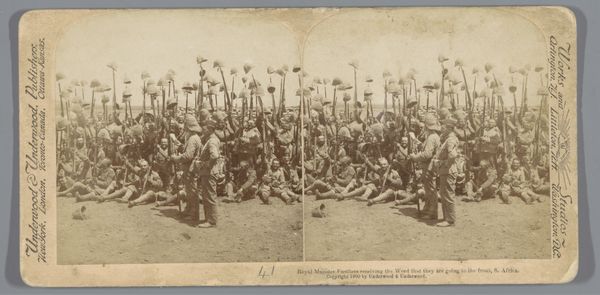
Lord Roberts (Frederick Sleigh Roberts) en Lord Kitchener (Horatio Herbert Kitchener) keuren de troepen die Kroonstad binnentreden 1901
0:00
0:00
print, photography, gelatin-silver-print
#
portrait
# print
#
landscape
#
photography
#
coloured pencil
#
orientalism
#
gelatin-silver-print
#
history-painting
Dimensions: height 88 mm, width 178 mm
Copyright: Rijks Museum: Open Domain
Curator: Before us is a gelatin-silver print dating back to 1901. The inscription indicates it depicts Lord Roberts and Lord Kitchener reviewing troops entering Kroonstad. Editor: It has a very sepia tone; quite muted and distant in feel. There's a striking rigidity in the composition—the lines of marching soldiers creating this grid against a softer, almost dreamlike background of trees. Curator: Indeed. The medium itself is significant. The gelatin-silver print became widespread in the late 19th century, allowing for mass production and dissemination of images like this, contributing to a visual culture deeply embedded with imperial narratives. Editor: Absolutely, the print is part of this system. Looking closely, I see the formal, almost ritualistic review of troops by these powerful figures, reinforces this display of colonial power. Note how Kitchener’s white horse contrasts to those around him, highlighting his symbolic value. Curator: I am struck by the stark contrast between the sharp detail in the foreground—the soldiers' uniforms, the instruments—and the blurred figures in the background. The shallow depth of field seems deliberate. Is it a semiotic construction, drawing attention to the immediate display of power whilst obscuring the wider colonial landscape? Editor: It's fascinating how photography, despite its claim to objective representation, can be so easily manipulated to promote a particular ideology. The very act of selecting this scene, framing it, and then circulating it reinforces the narrative of British authority. Curator: The print serves less as an objective document and more as a piece of carefully crafted propaganda. Editor: Right. Considering the context—the Anglo-Boer War—the image functions to legitimize and even glorify British actions in South Africa. The clean lines of the marching soldiers suggests their discipline, and hence British superiority. Curator: It makes one wonder about the unseen histories – the narratives of the colonized, the dispossessed. The soldiers shown here as proud entrants into Kroonstad were surely seen very differently by the local population. Editor: Precisely. That’s a blind spot which speaks volumes about its intended audience and impact, underlining the image's constructed nature and deeply political role. Curator: Well, this brief examination gives us pause to consider how form serves function in reinforcing socio-political agendas. Editor: It’s clear how an ostensibly simple photographic print operates within larger structures of power, influencing historical understanding.
Comments
No comments
Be the first to comment and join the conversation on the ultimate creative platform.
